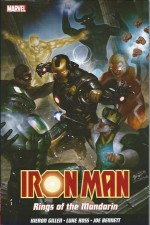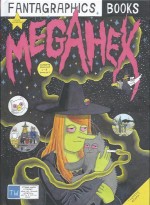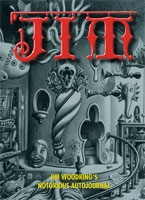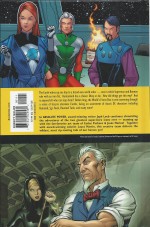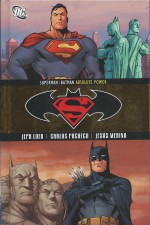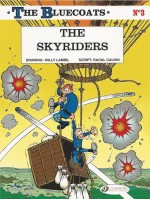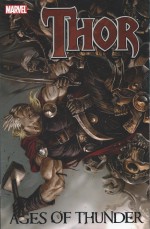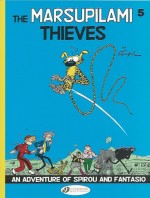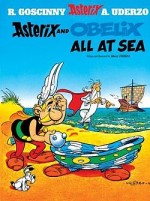
By Uderzo, translated by Anthea Bell & Derek Hockridge (Orion Books)
ISBN: 978-0-75284-778-8
A son of Italian immigrants, Alberto Aleandro Uderzo was born on April 25th 1927 in Fismes on the Marne. As a child reading Mickey Mouse in Le Pétit Parisien he showed artistic flair from an early age and dreamed of becoming an aircraft mechanic. Albert became a French citizen when he was seven and found employment at thirteen, apprenticed to the Paris Publishing Society, where he learned design, typography, calligraphy and photo retouching.
When World War II broke out he spent time with farming relatives in Brittany and joined his father’s furniture-making business. Brittany beguiled and fascinated Uderzo: when a location for Asterix‘s idyllic village was being mooted, the region was the only choice.
In the post-war rebuilding of France, Uderzo returned to Paris and became a successful artist in the recovering nation’s burgeoning comics industry.
His first published work, a pastiche of Aesop’s Fables, appeared in Junior and in 1945 he was introduced to industry giant Edmond-François Calvo (whose own masterpiece The Beast is Dead is far too long overdue for a commemorative reissue…).
The tireless Uderzo’s subsequent creations included the indomitable eccentric Clopinard, Belloy, l’Invulnérable, Prince Rollin and Arys Buck. He illustrated Em-Ré-Vil’s novel Flamberge, worked in animation, as a journalist and illustrator for France Dimanche, and created the vertical comicstrip ‘Le Crime ne Paie pas’ for France-Soir.
In 1950 he illustrated a few episodes of the franchised European version of Fawcett’s Captain Marvel Jr. for Bravo!
An inveterate traveller, the artistic prodigy met Rene Goscinny in 1951. Soon becoming fast friends, they resolved to work together at the new Paris office of Belgian Publishing giant World Press. Their first collaboration was in November of that year; a feature piece on savoir vivre (how to live right or gracious living) for women’s weekly Bonnes Soirée, following which an avalanche of splendid strips and serials poured forth.
Jehan Pistolet and Luc Junior were created for La Libre Junior and they resulted in a western starring a “Red Indian†who eventually evolved into the delightfully infamous Oumpah-Pah. In 1955, with the formation of Édifrance/Édipresse, Uderzo drew Bill Blanchart for La Libre Junior, replaced Christian Godard on Benjamin et Benjamine and in 1957 added Charlier’s Clairette to his portfolio.
The following year, he made his debut in Tintin, as Oumpah-Pah finally found a home and a rapturous audience. Uderzo also drew Poussin et Poussif, La Famille Moutonet and La Famille Cokalane.
When Pilote launched in 1959 Uderzo was a major creative force for the new magazine, collaborating with Charlier on Tanguy et Laverdure and launching – with Goscinny – a little something called Asterix…
Although the gallant Gaul was a massive hit from the start, Uderzo continued working on Les Aventures de Tanguy et Laverdure, but once the first hilarious historical romp was collected in an album as Ast̩rix le gaulois in 1961 it became clear that the series would demand most of his time Рespecially since the incredible Goscinny never seemed to require rest or run out of ideas.
By 1967 Asterix occupied all Uderzo’s time and attention, so in 1974 the partners formed Idéfix Studios to fully exploit their inimitable creation. When Goscinny passed away three years later, Uderzo had to be convinced to continue the adventures as writer and artist, producing a further ten volumes until 2010 when he retired.
After nearly 15 years as a weekly comic serial subsequently collected into book-length compilations, in 1974 the 21st (Asterix and Caesar’s Gift) was the first published as a complete original album before serialisation. Thereafter each new release was an eagerly anticipated, impatiently awaited treat for the strip’s millions of fans…
More than 325 million copies of 35 Asterix books have sold worldwide, making his joint creators France’s best-selling international authors, and now that torch has been passed and new sagas of the indomitable are being created by Jean-Yves Ferri and Didier Conrad…
One of the most popular comics on Earth, the collected chronicles of Asterix the Gaul have been translated into more than 100 languages since his debut, with twelve animated and live-action movies, TV series, assorted games, toys, merchandise and even a theme park outside Paris (Parc Astérix, naturellement)…
Like all the best stories the narrative premise works on more than one level: read it as an action-packed comedic romp of sneaky and bullying baddies coming a-cropper if you want or as a punfully sly and witty satire for older, wiser heads. We Brits are further blessed by the brilliantly light touch of master translators Anthea Bell & Derek Hockridge who played no small part in making the indomitable little Gaul so very palatable to English tongues.
Many of the intoxicating epics are set in various exotic locales throughout the Ancient World, with the Garrulous Gallic Gentlemen reduced to quizzical tourists and bemused commentators in every fantastic land and corner of the civilisations that proliferated in that fabled era. The rest – more than half of the canon – take place in Uderzo’s beloved Brittany, where, circa 50 B.C., a little hamlet of cantankerous, proudly defiant warriors and their families resisted every effort of the mighty Roman Empire to complete the conquest of Gaul.
The land is divided by the notional conquerors into provinces of Celtica, Aquitania and Amorica, but the very tip of the last just refuses to be pacified…
Whenever the heroes were playing at home, the Romans, unable to defeat the last bastion of Gallic insouciance, futilely resorted to a policy of absolute containment. Thus the little seaside hamlet was permanently hemmed in by the heavily fortified garrisons of Totorum, Aquarium, Laudanum and Compendium.
The Gauls couldn’t care less, daily defying and frustrating the world’s greatest military machine simply by going about their everyday affairs, protected by the miraculous magic potion of resident druid Getafix and the shrewd wits of the diminutive dynamo and his simplistic, supercharged best friend Obelix…
Firmly established as a global brand and premium French export from the mid-1960s onwards, Asterix the Gaul continues to grow in quality as new creators toil ever onward, crafting further fabulous sagas and building a stunning legacy of graphic excellence and storytelling gold…
Uderzo’s sixth session as sole creator was Asterix and Obelix All at Sea (originally entitled La Galère d’Obélix): released in 1996 and the 30th volume of the ever-unfolding saga. It began in the cruel and callous capital of civilisation wherein the Master of the World was having a bit of a bad day. Not as bad however as his Grand Admiral Crustacius, who has just allowed a bunch of galley slaves to mutiny and steal Julius Caesar‘s personal galley…
As the severely tongue-lashed mariner and his browbeaten aide Vice-Admiral Nautilus scurry away to pursue the fugitives, aboard the magnificent vessel magnificent Greek rebel Spartakis – bearing a striking resemblance to the magnificent Kirk Douglas in all his glory – debates with his recently-liberated comrades from many nations on where in the Rome-ruled world they can go to remain free…
A British oarsman then suggests a certain Gaulish village on the coast of Armorica which the empire has never conquered…
Meanwhile in the faraway subject of their discussions, Asterix and Obelix are in an argumentative mood too, but their clash is put aside when word comes that the entire complement of all four encircling garrisons are massing on the far side of the forest.
Always eager for a little martial recreation the villagers dose up on Getafix the Druid’s strength-boosting magic potion. Once again Obelix is frustrated in his attempt to get a share of the tantalising elixir and stumbles off in high dudgeon.
The generally genial giant had fallen into a vat of potion as a baby and grown up a permanently superhuman, eternally hungry hulk who hated being told no and didn’t believe more of the mouth-watering miracle mixture could harm him…
The Romans are utterly unaware of the danger insouciantly sauntering towards them, engaged as they are in drill to celebrate the imminent arrival of Admiral Crustacius. Thoroughly thrashing the amassed legions, the victorious Gauls wonder why Roman-bashing addict Obelix is absent and Getafix, dreading the worst, dashes back to discover his greatest fears realised.
The intransigent idiot has imbibed deeply from the potion and been turned to stone…
Nothing the Druid can conceive seems able to cure the calcified colossus and it’s during this time of trouble that Spartakis and his freed slaves arrive, requesting sanctuary. As the welcoming villagers carry the huge ornate galley into the village, the Obelix ordeal takes a strange turn as his stony spell wears off and the former fighting fool returns to flesh and blood – albeit as the puny helpless little boy he was before ever falling into the potion pot. The little wimp can’t even eat roast boar anymore…
The little lad is the darling of the town but cannot abide his weak ineffectual status. The situation becomes truly intolerable after the boy is captured by Crustacius and shipped off to Rome. After suitably castigating the soldiery, Asterix, Getafix and faithful mutt Dogmatix give chase in Caesar’s ship, manned by Spartakis and his valiant crew.
Powered by potion, the pursuers easily overtake the Romans, who have been hampered by the obnoxious antics of Obelix and the predations of the perennially, phenomenally unlucky pirates to whom – after a period of traditional chastisement – Asterix gives Caesar’s stolen galley.
Crucially, however, in his haste the little warrior leaves behind a barrel of potion when his comrades and little Obelix all transfer to a new, less noticeable vessel.
As the Gauls sail off in the pirate’s ship, Getafix has an inspired idea and suggests to Spartakis that they make for the last remnant of Atlantis, explaining that the idyllic Canary Islands survived the inundation of the magic continent and the people living there now are reclusive beings of great power and knowledge who might be able to restore Obelix to his natural state…
When they finally arrive in that beautiful land of miracles they are greeted by old man Absolutlifabulos and hordes of beautiful, happy children riding dolphins, centaurs, swans and winged cattle. The jolly dotard explains that the Atlanteans have reverted themselves to carefree immortal childhood, but their powers cannot do anything to cure Obelix.
As the downhearted Gauls make their way home, Spartakis and his men opt to stay and become forever kids too…
Meanwhile on Caesar’s galley Crustacius has discovered Getafix’s stashed potion and powered up, dreaming of ousting his foul-tempered boss and making himself Emperor, even as leagues away a Roman boarding party invades the pirate galley and menaces the powerless Gauls.
With Asterix about to be killed, little Obelix goes berserk and the emotional overload restores him to his corpulent, hyper-charged self, much to the distress of the terrified soldiers…
By the time Crustacius reaches Rome he has made the same mistake Obelix did and his rapid overdosing on potion only provides Julius Caesar with another statue for the Circus Maximus…
In Gaul however, Obelix, with a lot of frustration to work through, debarks at recently repaired Aquarium for a spot of cathartic violence before he accompanies his faithful chums back to the village for a celebratory feast…
Packed with thrilling action, good-natured joshing, raucous, bombastic, bellicose hi-jinks and a torrent of punishing puns to astound and bemuse youngsters of all ages, this rollicking fantasy and paean to true friendship cements Uderzo’s reputation as a storyteller whilst his stunning illustrative ability affords glimpses of sheer magic to lovers of cartoon art. Asterix and Obelix All at Sea proves that the potion-powered paragons of Gallic Pride will never lose their potent punch. © 1996 Les Editions Albert René, Goscinny/Uderzo. Revised English translations © 1998, 2002 Les Editions Albert René, Goscinny/Uderzo. All rights reserved.



